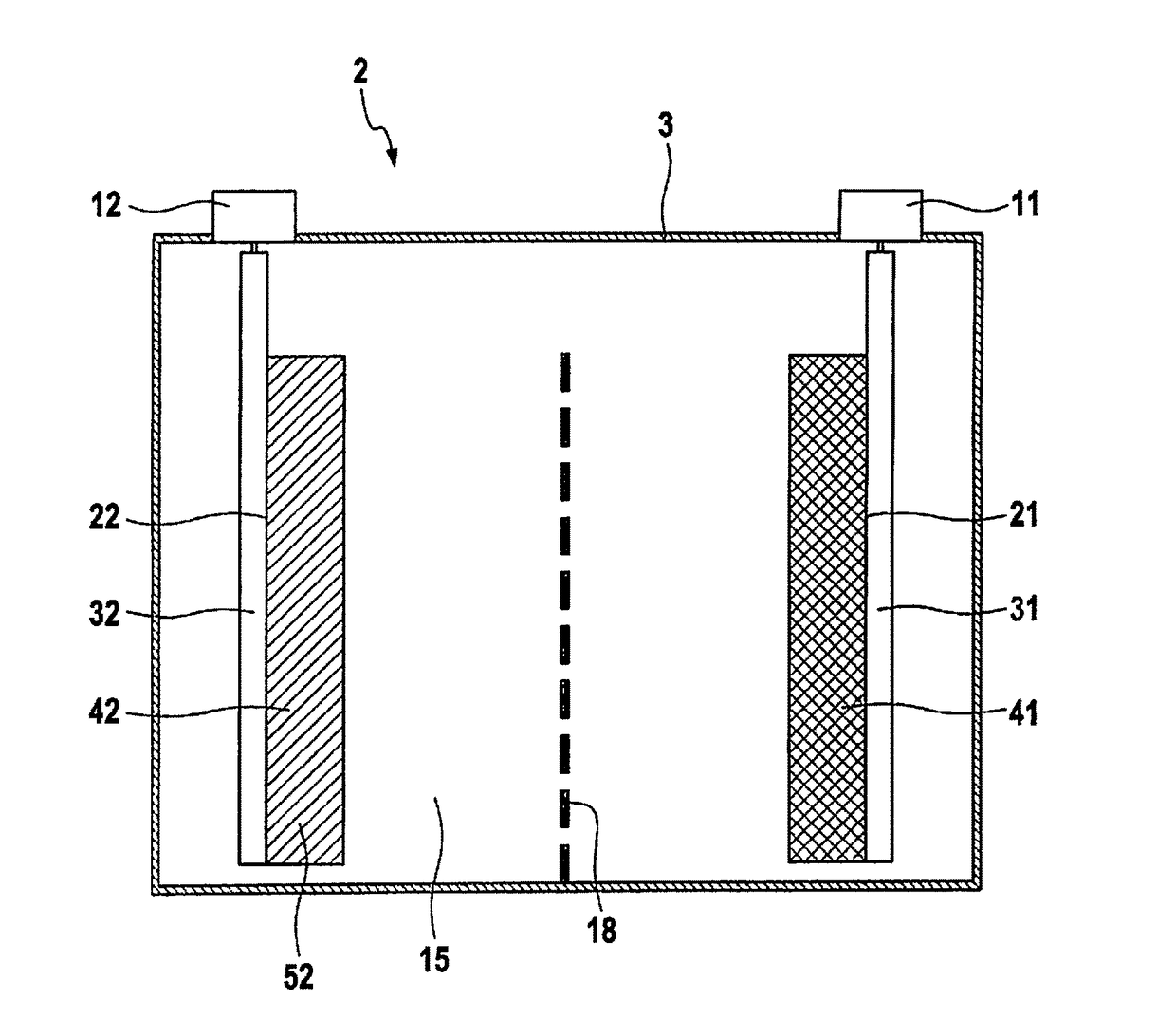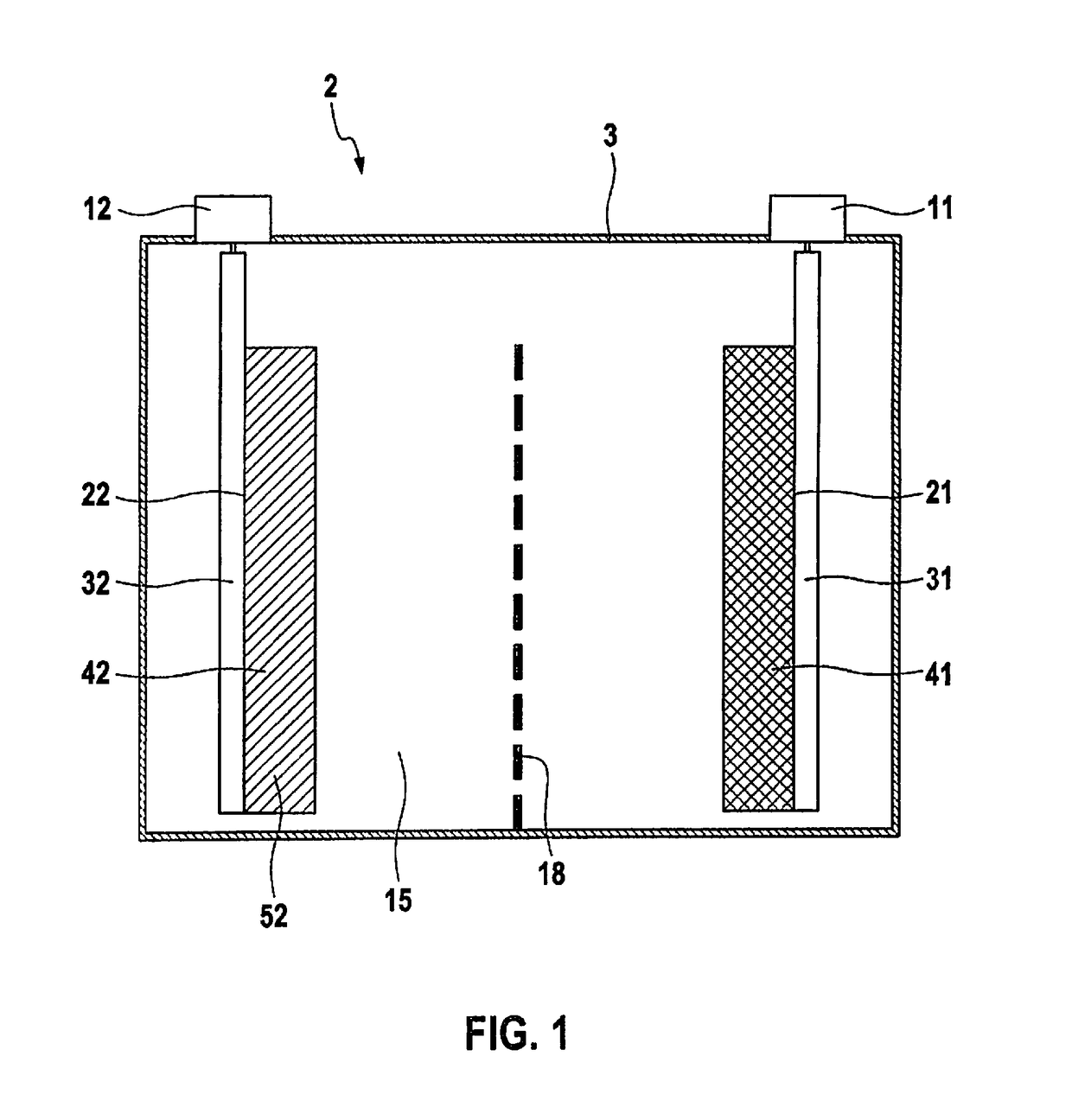Coated cathode active material for a battery cell
- Summary
- Abstract
- Description
- Claims
- Application Information
AI Technical Summary
Benefits of technology
Problems solved by technology
Method used
Image
Examples
Embodiment Construction
[0059]A battery cell 2 is schematically illustrated in FIG. 1.
[0060]Battery cell 2 includes a cell housing 3 having a prismatic design, in the present case a cuboidal design. In the present case, cell housing 3 has an electrically conductive design and is made of aluminum, for example. However, cell housing 3 may also be made of an electrically insulating material, for example plastic.
[0061]Battery cell 2 includes a negative terminal 11 and a positive terminal 12. A voltage provided by battery cell 2 may be tapped via terminals 11, 12. In addition, battery cell 2 may also be charged via terminals 11, 12. Terminals 11, 12 are situated spaced apart from one another on a top surface of prismatic cell housing 3.
[0062]An electrode winding which includes two electrodes, namely, a negative electrode (anode) 21 and a positive electrode (cathode) 22, is situated within cell housing 3 of battery cell 2. Negative electrode 21 and positive electrode 22 each have a foil-like design, and are woun...
PUM
 Login to View More
Login to View More Abstract
Description
Claims
Application Information
 Login to View More
Login to View More - R&D
- Intellectual Property
- Life Sciences
- Materials
- Tech Scout
- Unparalleled Data Quality
- Higher Quality Content
- 60% Fewer Hallucinations
Browse by: Latest US Patents, China's latest patents, Technical Efficacy Thesaurus, Application Domain, Technology Topic, Popular Technical Reports.
© 2025 PatSnap. All rights reserved.Legal|Privacy policy|Modern Slavery Act Transparency Statement|Sitemap|About US| Contact US: help@patsnap.com


